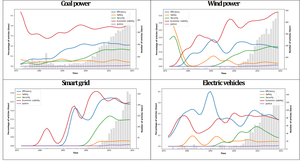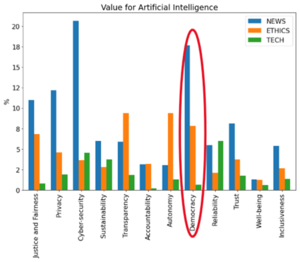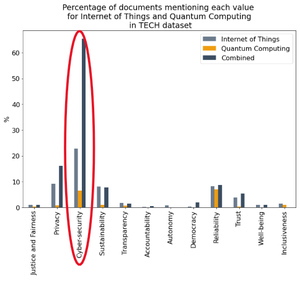From energy justice framework to claims of injustice: about normative uncertainties
Identifying research gaps through the lens of values
A value perspective
Social resistances and moral issues caused by energy transition technologies are frequent: protests against wind farms, affordability issues of green energy services, privacy issues caused by digital technologies, etc. Such issues are a serious threat to the success of the energy transition.
In this research, we take a value perspective. Values may be understood as enduring or long-lasting beliefs about what is good or desirable (Rokeach 1973; Schwartz and Bilsky 1987). Examples of values are ‘sustainability’, ‘privacy’, and ‘inclusiveness’. Values can be constraints that we feel technologies need to comply with, but also reasons for developing and improving technologies. Some values are central to the engineering effort: ‘efficiency’, ‘reliability’, ‘cost-effectiveness’. The emergence of the value ‘sustainability’ in the 1980s led to increasing investments in renewable energy technologies (WCED 1897).
Social resistances and moral issues caused by energy transition technologies can be explained by a mismatch between values embedded in these technologies and those voiced in society. The literature on value-sensitive design (Friedman and Hendry 2019, van den Hoven et al. 2015) advocates for the pro-active integration of human values into technological development. However, this does not systematically happen in technological development. De Wildt et al. (2021) show that technical and economic values such as ‘efficiency’ and ‘economic viability’ are often considered early in the design phase of technologies (see figure 1). More human values such as ‘justice’ and ‘security’ are usually only considered at later stages when the technology is mass-produced. At that point, remaining design options to account for human values are often limited.

Tracing values in text corpora using topic modelling
To ensure the responsible development and use of energy transition technologies, it is essential to identify values voiced in society proactively. One can then evaluate whether these are adequately addressed in policy-making and regulation, and technological research and innovation. Identifying potential gaps may point to the need for regulatory adjustments or the establishment of new research programs.
Values voiced in society can be identified using text corpora, such as newspaper articles and tweets. The advantage of using (large) text corpora is the analysis span that can be realised. Indeed, many organisations (businesses, regulators, governments, consumers, etc.) are involved in the energy transition. Also, the range of values and potential moral concerns is extensive. Even experts may not always be able to capture all ethical implications of the energy transition.
However, a difficulty when tracing values in text corpora is that values tend to be discussed in a latent manner. Rather than explicitly naming the value in question, authors often use a wide range of other words, which implicitly refer to a value. For example, texts addressing the value ‘privacy’ may not explicitly mention the word “privacy,” but they may contain words such as “private,” “theft,” or “cyber.” Texts may also refer to solutions to privacy issues, for example, by mentioning the word “encryption” or “firewall.” Nonetheless, encountering these words in a document does not always mean it is about privacy. For example, an author might also use the word “private” to refer to individual ownership.
An example is provided in Figure 2. Using only ‘privacy’ as a keyword would lead to omitting many documents about privacy. Adding additional keywords related to privacy would ensure that more documents are retrieved, but inevitably capture documents that are not related to privacy.

Using topic modelling, we define values as a distribution of words rather than a set of keywords. Probabilistic topic models (Blei, Carin, and Dunson 2010) originate from the field of text-mining. A topic referring to the value privacy will have high probabilities on terms such as ‘confidentiality,’ ‘private,’ and ‘secret,’ and low probabilities on words that do not refer to the value. Documents addressing the value privacy are captured by comparing the distribution of words of each document with the distribution of words of topics referring to values. Capturing values using distributions of words provide a better approximation of the extent to which different values are discussed. Documents addressing each value can then be isolated for further analysis.
Identifying research gaps
We demonstrate here two ways to identify research gaps for digital technologies. The ambition of this project is to extend such analyses for energy transition technologies.
Distribution of values in different datasets:

Figure 3 shows how frequently different values for artificial intelligence are discussed in newspaper articles (NEWS), the literature on ethics (ETHICS), and the techno-scientific literature (TECH). The figure shows that the value ‘democracy’ is a major concern discussed in newspapers, while it seems to be only poorly addressed in the techno-scientific literature. This figure raises two questions.
The first question is why the value ‘democracy’ is poorly addressed in the techno-scientific literature. From the figure, we cannot necessarily conclude that the techno-scientific literature is not providing solutions for concerns related to A.I. and democracy voiced in the news. Algorithms might exist that do more justice to democratic processes. However, the fact that democracy is often not mentioned raises the concern of whether sufficient awareness exists about potential democratic issues, and whether these issues are being addressed systematically. As a result, the development of better A.I. solutions in terms of democracy may remain sporadic. Research may be required to develop and promote tools to assess the democratic impact of A.I. technologies systematically.
The second question is whether the value ‘democracy’ is discussed the same way in different datasets. A manual investigation shows that documents in the NEWS dataset are essentially about cyber-security, elections, and the role of big tech companies. Concerns mentioned include the use of A.I. in policy-making, which does not do justice to the democratic process, and how A.I. can (intentionally or not) shape people’s political opinions. A manual investigation of documents in the TECH dataset shows that A.I. is essentially discussed in the context of supervised learning algorithms and natural language processing. These tools can help to classify political opinions and detect fake news. Democracy seems to be discussed by referring to the positive impact of A.I. technologies. Concerns related to the potential adverse effects of A.I. on democracy seem to be poorly addressed.
News values when technologies are combined

In this example, we show how topic modelling can be used to identify challenges that emerge when technologies are combined. Digital technologies (IoT, A.I., Blockchain) are increasingly used simultaneously to create new technological solutions (e.g. digital twins, drone technology, web 3.0). Figure 7 shows that the value ‘cybersecurity’ is already deemed relevant in the techno-scientific literature to both internet of things and quantum computing. Nonetheless, its relevance increases dramatically when both technologies are combined. This indicates that combining both technologies raises new and specific cyber-security issues. A manual investigation of this literature shows that the possibility of quantum computing attacks causes increasing cyber-security issues. Existing crypto algorithms, frequently used in the internet of things, cannot always resist such attacks.
Current work
In this project, we are particularly looking into new challenges caused by the deployment of hydrogen technologies. Questions include whether current research adequately addresses the range of societal issues (values) raised by hydrogen deployment. Such insights can be highly relevant for researchers and science policy in general.
References
Rokeach, M. 1973. The Nature of Human Values. New York: The Free Press.
Schwartz, S. H., and W. Bilsky. 1987. “Toward a Universal Psychological Structure of Human Values.” Journal of Personality and Social Psychology 53 (3): 550-62. doi: 10.1037/0022-3514.53.3.550
World Commission on Environment and Development. 1987. Our Common Future. Report of the World Commission on Environment and Development. Oxford: Oxford University Press.
Friedman, B. and D. Hendry, Value sensitive design: shaping technology with moral imagination. 2019, Cambridge, Massachusetts: The MIT Press.
van den Hoven, J., P.E. Vermaas, and I. Van de Poel, eds. Handbook of ethics and values in technological design. Sources, Theory, Values and Application Domains. 2015, Springer.
Blei, David, Lawrence Carin, and David Dunson. 2010. “Probabilistic Topic Models.” IEEE Signal Processing Magazine, November, 5563111. https://doi.org/10.1109/MSP.2010.938079.
Wildt, T. E. de, I. R. van de Poel, and E. J. L. Chappin. 2021. “Tracing Long-Term Value Change in (Energy) Technologies: Opportunities of Probabilistic
Topic Models Using Large Data Sets.” Science, Technology, & Human Values, November, 016224392110544. https://doi.org/10.1177/01622439211054439.